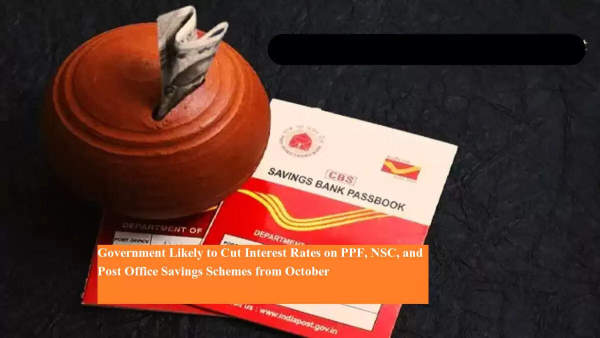
Investors who rely on Post Office small savings schemes for secure returns may face disappointment soon. The government is expected to reduce interest rates on popular schemes like Public Provident Fund (PPF), National Savings Certificate (NSC), and other post office deposits.
This possible rate cut comes on the back of the Reserve Bank of India (RBI) lowering the repo rate multiple times this year and a noticeable decline in government bond yields. According to reports, the Finance Ministry is scheduled to review the interest rates on these schemes on September 30, 2025, after which the revised rates for the October–December quarter will be announced.
For the last few quarters, despite major changes in monetary policy, the government chose not to revise downwards the returns on savings instruments such as PPF, Sukanya Samriddhi Yojana (SSY), Senior Citizens’ Savings Scheme (SCSS), and NSC. However, with borrowing costs falling in the broader economy, officials believe the time is ripe for a downward revision.
If implemented, the revised rates will come into effect from October 1, 2025, and will remain valid until December 31, 2025.
The Reserve Bank of India has cut the repo rate three times in 2025, resulting in a total reduction of 1 percentage point.
At the beginning of the year, the repo rate stood at 6.50%.
RBI reduced it by 25 basis points each in its February and April monetary policy meetings.
In June, the central bank went further, slashing it by 50 basis points.
As a result, banks have lowered the interest rates on their fixed deposits (FDs). Several high-yield special FD schemes were either discontinued or continued at lower rates.
This overall decline in lending and deposit rates has put pressure on the government to align post office savings schemes with broader market trends.
Another major factor influencing interest rate adjustments is the yield on government securities (G-Secs).
On January 1, 2025, the yield on 10-year G-Secs was 6.779%.
By September 24, 2025, it had fallen to 6.483%, reflecting a significant decline.
Although there has been a slight upward movement in yields over the past three months, they still remain lower than January levels by about 0.296 percentage points.
Lower yields make it more expensive for the government to continue offering higher fixed returns on savings schemes, thereby increasing the likelihood of a rate cut.
The last revision in post office scheme interest rates took place in the January–March 2024 quarter.
The 3-year fixed deposit rate was raised from 7% to 7.1%.
The Sukanya Samriddhi Yojana (SSY) interest rate was increased from 8% to 8.2%.
No other schemes witnessed any changes at that time.
Since then, despite changes in repo rate and bond yields, rates have been left untouched—until now.
If the Finance Ministry reduces the interest rates, small investors—especially senior citizens, middle-class savers, and those relying on fixed-income instruments—may see lower returns in the coming quarter.
PPF investors could earn less on their long-term retirement savings.
NSC returns may fall, reducing their appeal compared to bank FDs.
Other post office savings schemes, which have been popular due to safety and assured returns, might lose some of their attractiveness.
On the flip side, the move aligns with the government’s borrowing cost and ensures that the interest payout burden does not rise disproportionately at a time when overall lending rates are falling.
The upcoming review by the Finance Ministry will be closely watched by millions of households. If rates are indeed cut, it would mark the first reduction in nearly two years.
For now, savers are advised to keep an eye on the official announcement on September 30, 2025, and evaluate whether to lock in funds before the new rates take effect.
While post office schemes remain one of the safest investment avenues, the expected rate cut serves as a reminder that returns are subject to broader economic conditions.